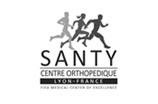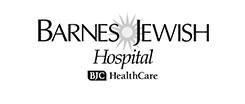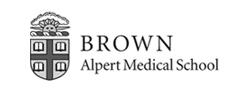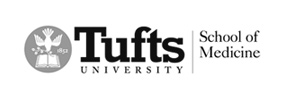Rotator Cuff Repair
Rotator Cuff Tears
Rotator cuff tears are the most common shoulder disorder leading to pain and dysfunction in an adult. The rotator cuff is a group of four tendons (supraspinatus, infraspinatus, teres minor and subscapularis). The purpose of the rotator cuff is to assist in elevation and rotation of the arm through the shoulder. The rotator cuff muscles originate on the scapula, traverse the glenohumeral joint and transition into tendons that then insert onto the humerus. The biceps tendon.
Causes of Rotator Cuff Tears
As patients age, the rotator cuff tendons can become torn. The two primary methods of tearing include age related degenerative changes, or “wear type” injuries to the tendon similar to wearing a hole away in your clothing and “traumatic tear type” injuries where the tendon is acutely pulled off the bone. Degenerative tears are extremely common in the population. The chances of having tears of a portion of the rotator cuff increases with age. In many patients with these tears, they have no pain or are asymptomatic. Several studies have evaluated the incidence of asymptomatic or painless rotator cuff tearing in individuals in the population. Up to 25% of patients over the age of 60 and over 50% of patients over the age of 80 have rotator cuff tears that are painless. The importance of this information is that degenerative rotator cuff tearing is a normal aging process and many of these do not produce symptoms. As a result, many of our treatments for rotator cuff tears that are symptomatic include rehabilitating the shoulder to attempt to drive a symptomatic tear into an asymptomatic tear. If conservative treatment fails, then rotator cuff repair is a reasonable option to treat a tear. Traumatic tears occur acutely and are usually a result of a significant injury or fall. Early surgical repair is often recommended in acute traumatic full-thickness tears due to the high chances for successful healing if treated early as well as the high success for symptom resolution.
Tears can be classified as full or partial thickness. Full thickness tears mean a portion of the tendon insertion is completely off the humerus whereas a partial thickness tear means a portion of the tendon is attach all across the humerus but there is some detachment of some portion of the tendon. In general, all partial thickness tears can be treated conservatively without negative consequences. Similarly, all degenerative full thickness tears in patients over the age of 65 to 70 can be initially treated conservatively. If they fail conservative measures after 6 – 8 weeks, it is reasonable to consider surgical repair. In degenerative full thickness tears in patients under the age of 65 and acute traumatic full thickness tears in individuals of any age, early surgical repair can be considered.
Symptoms of Rotator Cuff Tears
In general, symptoms from a rotator cuff tear include pain that extends along the side of the shoulder down to the elbow. Very infrequently does pain extend past the elbow to the hand and we may consider the pain to be coming from other sources including the neck or peripheral nerves. Pain is typically worse with overhead activities or repetitive usage. Pain is worse with night and can often disrupt sleep. Weakness can occur with arm elevation or rotation with large tears involving multiple rotator cuff tendons. Tenderness over the outside of the arm. Numbness and tingling in the hand are typically NOT symptoms associated with rotator cuff tearing.
Diagnosis of Rotator Cuff Tears
Diagnosis of rotator cuff tearing is based upon history, physical exam and imaging typically consistent with an MRI, ultrasound or CT arthrogram. History includes lateral based arm pain and examination shows weakness and pain with rotator cuff testing. Pain is often with overhead activity and sleeping. MRI is over 95% sensitive and specific to identify full thickness rotator cuff tearing. MRIs will typically show high signal intensity on T2 weighted images between the humerus and the tendon edge. Both ultrasound and CT arthrogram are useful in cases where patients cannot undergo a MRI due to cardiac stents or intracranial clips or spinal stimulators.
Nonoperative Versus Surgical Treatment
The decision regarding surgical versus nonoperative treatment is based upon patient age and activity, tear size and muscle quality and tear acuity. If patients have an acute trauma leading to a tear that is full thickness of substantial size (over 1 cm typically), surgical repair is often recommended independent of age due to the high potential for healing if repair is performed. In the setting of chronic tears (tears with symptoms lasting either over 6 months or with insidious onset without acute trauma), initial recommendation of repair versus nonoperative treatment is typically based upon age and tear characteristics. In patients under the age of 65, early repair is considered for full thickness reparable tears with good muscle quality. In cases of patients over the age of 65 or those patients of any age with a tear considered irreparable (based upon size and poor muscle), initial nonoperative treatment is recommended. If nonoperative care is not successful in these patients after 6 to 12 weeks, surgical consideration is made with repair or reconstructive options including tendon transfer, superior capsule reconstruction, arthroscopic debridement or reverse total shoulder arthroplasty dependent on physical exam, clinical history and radiologic findings.
Nonoperative treatment
Patients in whom the primary complaint is a symptomatic rotator cuff tear that is amendable to conservative treatment, patients will usually benefit from reassurance and a home program of gentle stretching and strengthening exercises. Indications for nonoperative treatment have been previously described but in general are for chronic or non-traumatic full-thickness tears in patients over the age of 65 or 70 and partial thickness tears in most age groups. If patients fail a course of 6 – 8 weeks of therapy, surgical treatment may be considered as an option.
Various nonoperative rotator cuff programs have been described for the general population and for athletes including throwers. The effectiveness of nonoperative treatment was recognized many years ago by Neer who in his initial article on anterior acromioplasty pointed out that "Many patients . . . were suspected of having impingement but responded well to conservative treatment." (Neer 1972)
Subacromial injections of corticosteroids have been reported by some to produce symptomatic relief. (Hollingworth Ellis 1983) However Withrington and coworkers (Withrington Girgis 1985) reported a double-blind trial of steroid injections and found no evidence of the efficacy of such treatment. Valtonen (Valtonen 1978) found no difference between subacromial and gluteal injections of steroids. Berry and colleagues (Berry Fernandes 1980) compared acupuncture physiotherapy steroid injections and anti-inflammatory medications and found no difference among these treatments. Steroid injections in or near the cuff and biceps tendons may produce tendon atrophy or may reduce the ability of damaged tendon to repair itself. Therefore, steroid injections may be used but with discretion. In general, we will recommend injections not with the purpose of permanently improving symptoms but reducing pain to allow patients to undergo physical therapy which may improve symptoms on a permanent basis.
Authors' preferred method of nonoperative management of rotator cuff tearing
In our approach to subacromial abrasion we recognize the important interplay between cuff weakness stiffness of the posterior capsule and subacromial roughness. We use a program designed by Sarah Jackins a physical therapist who has worked with the University of Washington Shoulder and Elbow Service since its inception in 1975. This treatment regimen is analogous to one that would be used for managing a tennis elbow or Achilles tendinitis and includes:
- Avoidance of repeated injury
- Restoration of normal flexibility
- Restoration of normal strength
- Aerobic exercise and
- Modification of work or sport.
The emphasis is on simple low-tech exercises that the patient can perform unassisted.
The Jackins Program
Step 1: Avoidance of Repeated Injury
Although it seems obvious that an affected shoulder must be rested we see patients each week who are trying to continue vigorous overhead work or swimming hundreds of miles per week in the presence of cuff symptoms. It is difficult to treat these symptoms when the affected area is repeatedly irritated; activities may need to be temporarily modified--light duty reducing mileage less throwing using the kickboard for a major part of the workout rather than continuing to try to "swim through" the problem or working on the forehand and footwork rather than beating away at the serve. Once symptoms have subsided the activity is progressively resumed with an emphasis on proper technique and a paced resumption of normal levels of performance.
Step 2: Restoration of Normal Flexibility
The goal of Step 2 is to stretch out all directions of tightness. Shoulders with subacromial abrasion are frequently stiff especially in the posterior capsule. As described above for posterior capsular tightness the most effective program is one that taught by the surgeon or therapist but is carried out by the patient. The goal of the flexibility program is to restore the range of motion to that of the unaffected shoulder. The recommended treatment consists of gentle stretches performed five times a day by the patient. Each stretch is performed to the point where the patient feels a pull against the shoulder tightness but not to the point of pain. Each stretch is performed for one minute so that the patient invests about 30 minutes per day in their shoulder. Obvious improvement commonly occurs within the first month but three months may be required to completely eliminate the condition. (Please see nonoperative treatment program of rotator cuff disorders and biceps tendon disorders in Physical Therapy protocols)
Step 3: Restoration of Normal Strength
When near-normal passive flexibility of the shoulder is restored the patient's attention is directed toward regaining muscle strength. As is the case in managing tennis elbow it is most effective to delay strengthening exercises until normal range of motion is achieved. As with the flexibility exercises the patient is given the responsibility for strengthening the shoulder. Internal and external rotator-strengthening exercises are carried out with the arm at the side to strengthen the anterior and posterior cuff muscles without the potential for subacromial grinding that exists with exercises in abduction and flexion. These exercises are most conveniently performed against the resistance of rubber tubing sheet rubber bike inner tubes springs or weights. It is convenient if the resistance device can be carried in a pocket or purse for frequent use through the day. As strength increases the patient is advanced to more resistance: thicker tubing tougher rubber sheets or more springs. Deltoid strengthening is added when it can be performed comfortably as are exercises to strengthen the scapular motors. Athletes are not returned to full activity until the shoulder has full mobility and strength. (Please see nonoperative treatment program of rotator cuff disorders and biceps tendon disorders in Physical Therapy protocols)
Step 4: Aerobic Exercise
If a patient has gotten out of shape as a result of the shoulder problem it is important to emphasize the need to regain normal fitness. To get back in shape and to improve the sense of well-being a half hour of "sweaty" exercise five days a week is recommended. Brisk walking may be the safest and most effective type of aerobic exercise but other suitable forms include jogging biking stationary biking and so on. Aerobic calisthenics as usually defined must be carefully reviewed to ensure that they do not require arm positions which aggravate the patient's symptoms.
Step 5: Modification of Work or Sport
Obviously the purpose of the program is to return the patient to the comfortable pursuit of normal activities. Not infrequently this requires some analysis of working and recreational techniques. Occasionally this is as simple as having the short grocery clerk stand on a platform at work. The technique of swimmers is reviewed to ensure for example adequate roll on the freestyle stroke. Throwers are taught the importance of body position and rotator cuff strength. Adequate knee bend and lumbar extension is reinforced in the execution of the tennis serve. If the patient has an occupation that requires vigorous or repeated use of the shoulder in painful positions vocational rehabilitation to a different job may be required.
Subsequent Steps
It may take six weeks before substantial benefit is realized. As long as the patient is making progress we continue this program. If improvement is not forthcoming the program is reviewed to be sure it is being conducted in an ideal way. The shoulder and the patient are also reevaluated to make sure there are no other factors that may be interfering with recovery. If repeat clinical evaluation indicates positive tendon signs (see figure 19) or other evidence of cuff fiber failure tendon imaging studies may be considered if their results would change the patient's management. If a well-motivated patient continues to have symptomatic subacromial abrasion after six months of a well-conducted program subacromial smoothing may be discussed as an alternative to continued non-operative management. Poor compliance with an exercise program may foretell an equally poor result from surgical treatment.
Surgical treatment of rotator cuff tearing
Surgical treatment of rotator cuff tearing is often recommended initially for patients in acute full-thickness rotator cuff tears and chronic full-thickness rotator cuff tears in patients under the age of 65 to 70. Rotator cuff repair surgery is also recommended for patients failing a nonoperative treatment program for 6 to 12 weeks who have chronic full-thickness rotator cuff tears in patients > 70 years of age and partial thickness rotator cuff tears.
Rotator cuff repair surgery is performed all arthroscopically. A camera and small instruments are utilized to view inside the shoulder and perform a repair. The instruments and camera are passed through small cannulas placed in the shoulder to perform the procedure. Either a single or multiple rows of suture anchors are placed in the humerus. The anchors are small screws with an eyelet at the top with string or suture passed through the eyelet. The anchors are placed into the humerus and the suture is passed into the tendon and tied to repair the tendon or tendons back to the humerus. At that point the tendon is repaired but will require several months for healing.
 Massive retracted rotator cuff tear viewed from the lateral portal
Massive retracted rotator cuff tear viewed from the lateral portal Arthroscopic suture bridge double row rotator cuff repair of massive retracted rotator cuff tear viewed from the lateral portal
Arthroscopic suture bridge double row rotator cuff repair of massive retracted rotator cuff tear viewed from the lateral portalSurgery is typically outpatient where patients will come in and go home the same day. They will be treated postoperatively with an interscalene cathether placed under ultrasound by our anesthesia pain specialists as well as oral medication. Patients will be in a sling for 6 weeks during the daytime and nighttime. The dressings may be removed between 3 to 5 days depending on the extent of the procedure and the wounds can get wet in the shower at that time. Patients will take the sling off, let the arm to the side in the shower, let the water run over wounds without soaping or scrubbing and then pat dry the shoulder and place the sling back on. Washing under the armpit is allowed. For the first 2 weeks, patients will be doing only elbow wrist and hand range of motion. At 2 weeks, the sutures will be removed from the wounds and patients will start physical therapy. At 6 weeks, patients may discontinue the sling and start using the arm for everyday activities with no lifting over 5 lbs. Stretching with therapy will continue. At 12 weeks, strengthening with therapy will start and the patient may lift up to 20 lbs. At 4.5 months, the patient will be able to lift up to 40 lbs and at 6 months return to all activities. There will be continued improvement in range of motion and strengthening for up to 12 months after surgery. Return to sport includes walking on the first postoperative day and stationary bike at 2 weeks. Running and jogging can start at 6 weeks. Swimming in a pool and road cycling can start at 3 months. Golf and tennis can start at 5 months. All other contact sports may be initiated at 6 months postoperative.
In cases of severe injuries, a variety of alternative procedures may need to be performed. In revision repairs or repairs with poor quality tissue, an arthroscopic augmentation with acellular dermal matrix graft may be required. In the setting of an irreparable tear, a superior capsule reconstruction utilizing acellular dermal matrix or a lower trapezius tendon transfer may be indicated. In the cases of irreparable tears with severe arthritis, a reverse total shoulder arthroplasty may be indicated. Each of these options will be discussed with patients if the indications are appropriate based upon the patients age, activity level and extent of rotator cuff injury.

MRI showing massive retracted reparable rotator cuff tear
 Massive retracted rotator cuff tear viewed from the posterior portal
Massive retracted rotator cuff tear viewed from the posterior portal Single row medialized repair of previous massive retracted rotator cuff tear viewed from the lateral portal
Single row medialized repair of previous massive retracted rotator cuff tear viewed from the lateral portal Arthroscopic augmentation of previous single row repair of massive retracted reparable single row repair using acellular dermal matrix graft viewed from the lateral portal
Arthroscopic augmentation of previous single row repair of massive retracted reparable single row repair using acellular dermal matrix graft viewed from the lateral portal
MRI showing massive retracted irreparable rotator cuff tear
 Massive retracted irreparable rotator cuff tear viewed from the lateral portal
Massive retracted irreparable rotator cuff tear viewed from the lateral portal Superior capsule reconstruction of the previous massive retracted irreparable rotator cuff tear viewed from the lateral portal
Superior capsule reconstruction of the previous massive retracted irreparable rotator cuff tear viewed from the lateral portal Massive irreparable rotator cuff tear viewed from the lateral portal
Massive irreparable rotator cuff tear viewed from the lateral portal Arthroscopic assisted lower trapezius transfer using Achilles tendon allograft viewed from the lateral portal of the prior irreparable massive rotator cuff tear
Arthroscopic assisted lower trapezius transfer using Achilles tendon allograft viewed from the lateral portal of the prior irreparable massive rotator cuff tear




